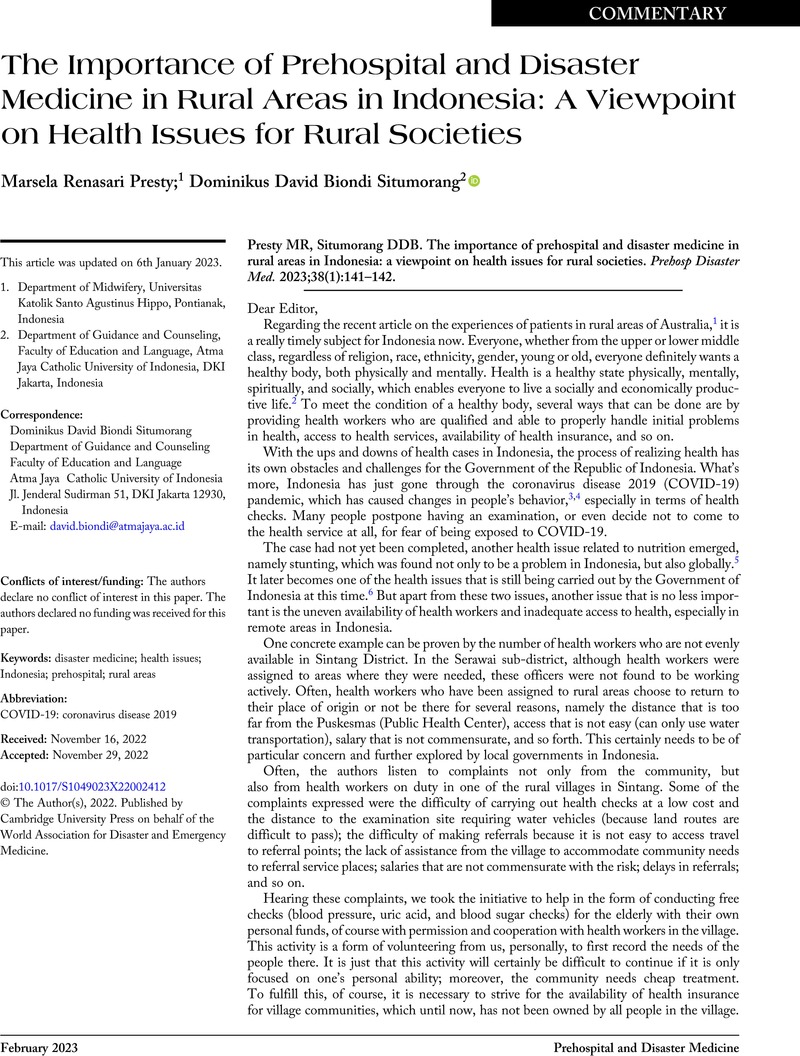Crossref Citations
This article has been cited by the following publications. This list is generated based on data provided by Crossref.
Noviana, Eddy
Faizah, Hasnah
Mustafa, M. Nur
Elmustian
Hermandra
Kurniaman, Otang
Rusandi, M. Arli
and
Situmorang, Dominikus David Biondi
2023.
Understanding 'Tunjuk Ajar Melayu Riau': Integrating local knowledge into environmental conservation and disaster education.
Heliyon,
Vol. 9,
Issue. 9,
p.
e19989.
Noviana, Eddy
Syahza, Almasdi
Putra, Zetra Hainul
Hadriana
Yustina
Erlinda, Sri
Putri, Desfi Rahmi
Rusandi, M. Arli
and
Biondi Situmorang, Dominikus David
2023.
Why is didactic transposition in disaster education needed by prospective elementary school teachers?.
Heliyon,
Vol. 9,
Issue. 4,
p.
e15413.
Presty, Marsela Renasari
and
Situmorang, Dominikus David Biondi
2023.
The Importance of Prehospital and Disaster Medicine in Rural Areas in Indonesia: A Viewpoint on Health Issues for Rural Societies – CORRIGENDUM.
Prehospital and Disaster Medicine,
Vol. 38,
Issue. 2,
p.
281.




